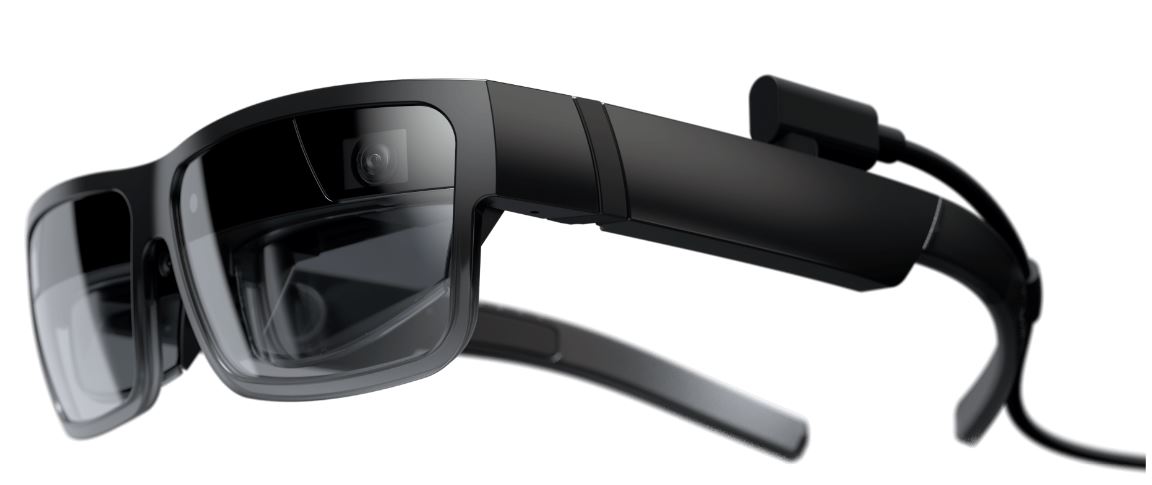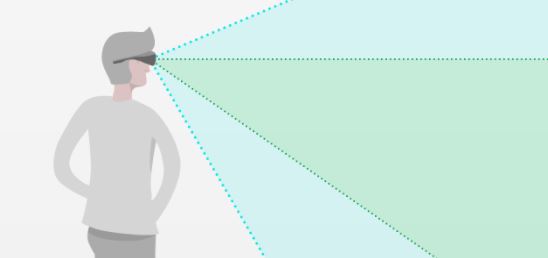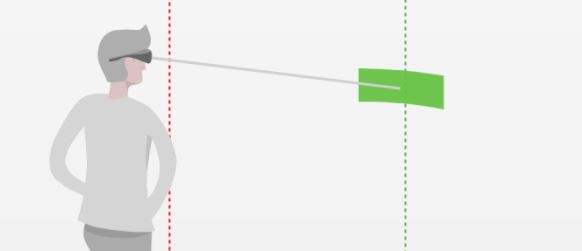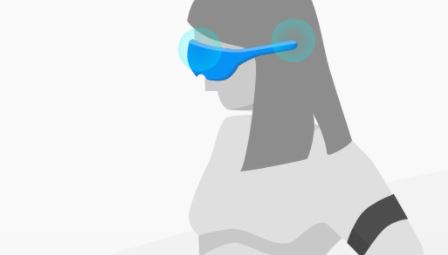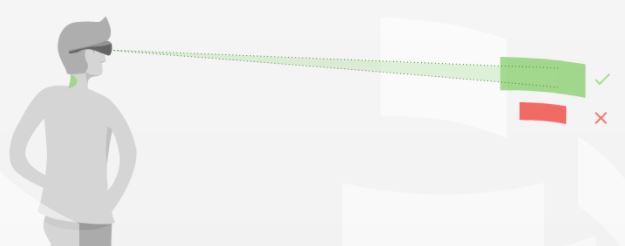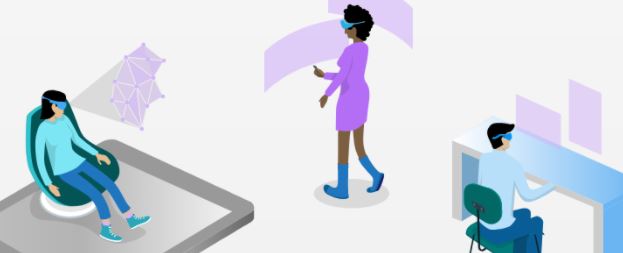ThinkReality A3 Glasses: Safety, Comfort and Warranty information
ThinkReality
ThinkReality
Describes the ThinkRealty A3 (20V7, 20V8) glasses safety, comfort and warranty information. The ThinkReality A3 includes the ThinkReality A3 Safety and Warranty Guide.
Safety
Customers use the Augmented Reality devices in a wide variety of environments. Keep in mind the safety of both the users and the people around them.
Do not distract the user from the real world:
Our attention gets easily distracted by sudden changes in the environment, such as fast animations and loud voices. When designing for the Augmented Reality, remember that the user might require their attention to stay in the real world, and diverting it might put both the user and the people around them in danger Especially, when the user might be in the middle of a cognitively challenging task, such as driving a vehicle or operating a machine, avoid:
- Sudden changes in colors.
- Sudden positional changes in elements.
- Sudden sounds.
- Sudden changes in Haptics.
Do not block critical element from the real world:
The user might be descending a staircase, or working at a construction site while wearing the AR glasses. Do not hide or cover any crucial real-world elements while the user is performing their tasks. For example, the Augmented Reality application should not hide surrounding people when driving a vehicle or prevent the user from hearing critical sounds from the environment.
Do not lead the user to an unsafe area:
Inform the user if the application is about to lead them to an area in which safety cannot be guaranteed. For example, if your application includes path finding, avoid showing an Augmented Reality arrow going through an area that should not be passed through, such as floors that are under construction. Try to find a way how the unsafe areas can either be avoided or make sure the user is aware of the limitations of the application.
Do not give the user a false sense of safety:
Remember that some user interface elements, such as green color, is often associated with safety. When leading the user to act in the real world, only signal that something is safe to do when you can be sure about the safety of the environment.
Do not sounds that are likely to be in the user's real-world environment:
For instance, a feedback sound that is like the sound of a forklift backing up could be very confusing, annoying and possibly dangerous in certain environments.
Comfort
In Augmented Reality, both software and hardware can cause discomfort to the user. For example, the glasses of choice might be uncomfortable wearing for prolonged periods of time; or continuous use of gestures can be tiring for the arms. Being aware of the different comfort factors when designing your application helps you to bring the best experience for the user.
Comfortable Viewing Angles:
Comfortable vertical viewing angles range from 10 degrees above the horizon to 60 degrees below the horizon.
In horizontal direction, the user may be able to turn themselves to adjust to the content. However, ensure to minimize the movements of the head and body by placing often used elements close to each other.
Do:
- Place often viewed AR elements to the optimal viewing region: 0 to 35 degrees below horizon. You can use the moderately comfortable angles in the upper and lower regions for occasionally needed elements.
- Place often viewed AR elements close to each other to minimize unnecessary head movements.
- If your application uses gaze and dwell as an input method, include a blank area near the center of the screen so the user can explore the field of view without accidentally launching or selecting something.
Avoid:
- Placing world-locked elements out of the comfortable viewing angles: > 10 degrees above the horizon or > 35 below the horizon.
- For head-fixed content, avoid putting content further than 20 degrees from the center to avoid eye strain.
- Placing often-accessed or in-task elements far apart from each other, causing dramatic head movements.
Comfortable and Minimum Viewing Distance:
Different AR glasses have different comfortable viewing distances specific to their optics. Mismatch in distance can lead to Vergence Accommodation Conflict. This may cause eye-strain or headaches for some users. Minimum viewing distance of at least 0.4 meters is recommended. Don't place the content closer than this as it may cause eye strain.
Do:
- Position the key elements, such as UI elements, close to the focal distance of the AR device's display to minimize the sensory mismatch.
- ThinkReality A3's focal distance is at 4 meters. Place often viewed content no closer than 2 meters.
Avoid:
- Rapid changes in the distance of the element
- Large differences in the optimal focus and distance of the AR elements
- Placing content closer than 0.4m in distance.
Glasses Comfort:
Some factors that affect glasses comfort include:
- Weight of the device may place pressure on the bridge of the nose, forehead, sides or back of the head.
- Pressure of the headband against forehead, temples, or bridge of nose might cause pain.
- Accommodating prescription lenses under the device may press the user's glasses into the bridge of the nose, forehead, or cheekbones.
The longer the user wears the glasses, the more noticeable any discomfort becomes. It is best to plan for tasks that are short duration, around 45 minutes to an hour, and allow for a 15 minute break with the glasses off.
Do:
- Design for user breaks in your task flows.
- Apps must have the capability to save state frequently to prevent accidental loss of data.
Avoid:
- Creating long-lasting task sequences that cannot be paused.
- Large differences in the optimal focus and distance of the AR elements.
Gestures:
Gestures are a powerful tool for interacting with the system. They can be fun to perform and appear magical to the user. However, gesturing in mid-air can quickly cause arm fatigue, and learning the gestures and performing them correctly adds to the user's memory burden.
Do:
- Give alternative input options for gestures.
- When defining new gestures, always check to ensure that the gesture is not already in use.
- Provide training for new gestures.
- Provide feedback so that the user knows the system recognizes the gesture and is acting on his command.
Avoid:
- Requiring the user to use gestures continuously.
- Inventing new, app-specific gestures.
- Limiting the interaction of your application or a task to a single input method.
Sounds:
In Augmented Reality, sound design can enrich the environment and cue the user to events at the app, system or environmental level. However, sound can be a dominant element in design and should be used in moderation In addition, the environment where the user is operating the glasses can drown out your sound design. You should plan your app to work both with and without sound.
Do:
- Give the user a possibility to turn off application sounds.
- Offer captions or tooltips when possible.
- Do not rely on sound as the only feedback mechanism in your app.
Avoid:
- Repetitive sounds.
- High-pitched, loud sounds.
- Sounds which make hearing the surrounding sounds in the environment harder.
Precise Hand and Head Movements:
When using an input method that requires physical targeting of the element, such as gaze, make sure to keep the target sizes comfortable. Certain physical conditions, such as tremors, or wearing protective clothing can reduce the precision of muscle movements even below the recommended target sizes. Always test your design concepts with users in a realistic setting as possible.
Do:
- Ensure that all the selectable elements are large enough in size.
- Leave enough space between elements to avoid accidental selections.
- The smaller the target, the more free space it needs around it to avoid accidental selection of the adjacent objects.
Avoid:
- Small targets that take long to select.
Design for Different User Height and Position:
Even though AR enables us to create spatial experiences, not all the use cases require continuous walking or standing. Make sure if your application will also be used while sitting down and design the interactions and elements accordingly.
Do:
- Give the user chances to rest and sit down, when possible, during the Augmented Reality experience.
- Give the user a chance to pause the application or task that they are doing.
- For applications that are pinned in the real world, test them with users of varying heights in the expected positions.
Avoid:
- Long periods of standing and walking, if possible.
- Placing elements on a fixed standing height next to the user.
Warranty
For ThinkReality A3 warranty, serial number and service parts information, click: ThinkReality A3 (20V7, 20V8) - Overview and Service Parts
Related Articles
Your feedback helps to improve the overall experience
